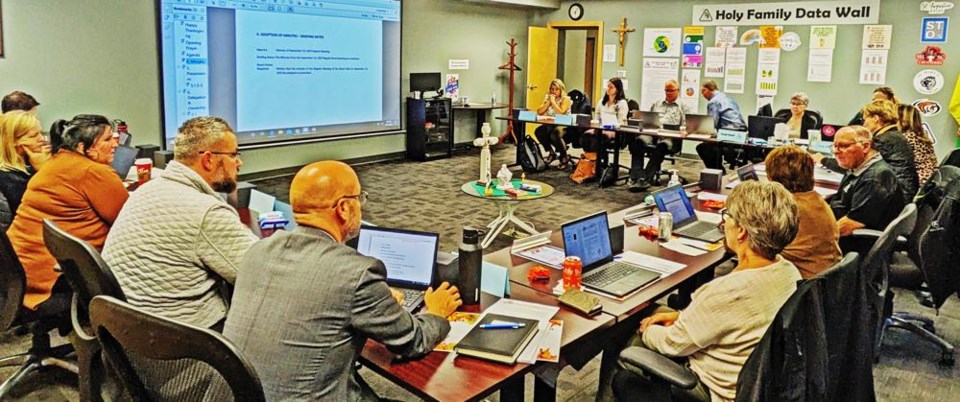WEYBURN – The Holy Family Roman Catholic Separate School Division celebrated the academic achievements of their students last year, and are now working on addressing the shortfalls to the goals set by the province.
The principals of all five schools in Holy Family were on hand at the board of trustees meeting on Wednesday, and talked about the strengths and challenges in each of their schools as the achievement numbers were presented.
The Education ministry has target levels for school divisions to reach for reading, writing, math and readiness for school of kindergarten students heading into Grade 1, and the board was presented with the data of how Holy Family students did in meeting those goals.
One factor in Holy Family’s data is that they include the results from 144 English language learners, of which the division has had 34 new families from Ukraine in the last two years, and a total of 21 languages spoken by newcomer students, explained Terry Jordens, superintendent of student services and assessment.
The largest language group of newcomers are from the Philippines, followed by Ukraine, and Indian languages, such as Punjabi.
A total of 71 students needed intensive supports, such as students on the autism spectrum, and 19 students were self-identified as Indigenous students.
Jordens noted that the English language learners are tracked for their progress in learning English along with their in-class academic performance.
As of June, 12 of the English language learners tested “off the charts” and were considered proficient enough that they are no longer part of that group, added Jordens, noting there were 11 EL learners who went on to high school in Â鶹ÊÓƵeast Cornerstone.
She said generally it takes newcomers one to three years to reach a level of proficiency in English for “playground language”, while for academic proficiency it takes a minimum of five years.
In the outcomes for readiness of kindergarten students to enter Grade 1, 76 per cent were reading at the Grade 1 level, compared to the school division goal of 90 per cent. Provincially, about 79 per cent of kindergarten students reached the level.
Jordens noted that there was a 23 per cent growth in readiness skills, and a 29-per-cent increase with the “Fueling Brains” program.
The board was told part of the reason for the shortfall is the students heading into Grade 1 were going through the isolationism of COVID restrictions, and this had a real effect on their socialization skills, particularly as they could not go to preschool during that time.
In reading, 73 per cent of students in Grades 1-5 were reading at grade level, compared to the provincial target of 80 per cent.
While this was short of the target, this group of students improved by 34 per cent from the beginning of the school year, and in addition, the Grade 5 students were well above the 80-per-cent target mark. Also, both Grade 2 and 5 students scored higher than last year.
For math, there was celebration to note as 88 per cent of students in Grades 1-9 achieved the grade level in math, above the target of 80 per cent, while in writing, 77 per cent achieved their grade level. However, four grade levels achieved over the 80-per-cent target level.
In the area of mental health and well-being, for which data is just collected for the school division, students were surveyed on these areas, and 92 per cent of students said they felt accepted for who they are at school.
In addition, 92 per cent of students said they felt safe at school, and 94 per cent of former Holy Family students went on to graduate high school in June, which is 15 per cent higher than the provincial average.
Jordens noted she submits all scores to the ministry, but the province will take out certain segments, such as English language learners or those with intensive needs, so they are not part of the provincially-compiled statistics.







